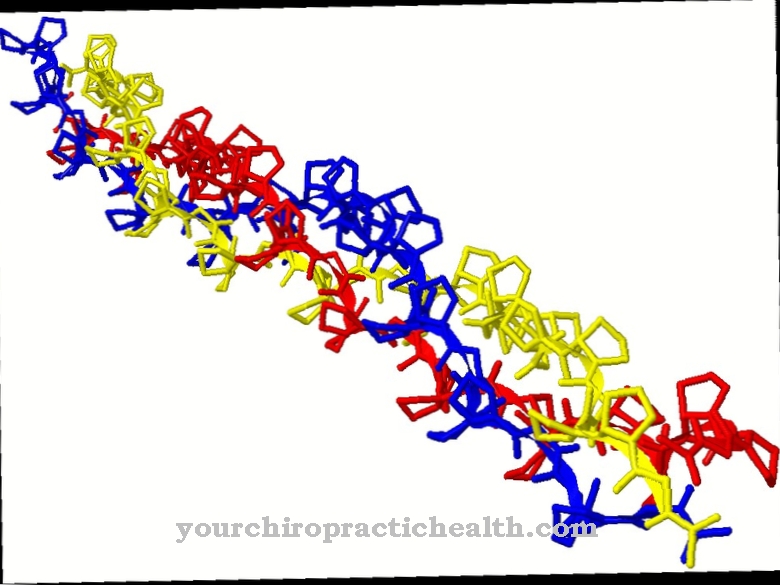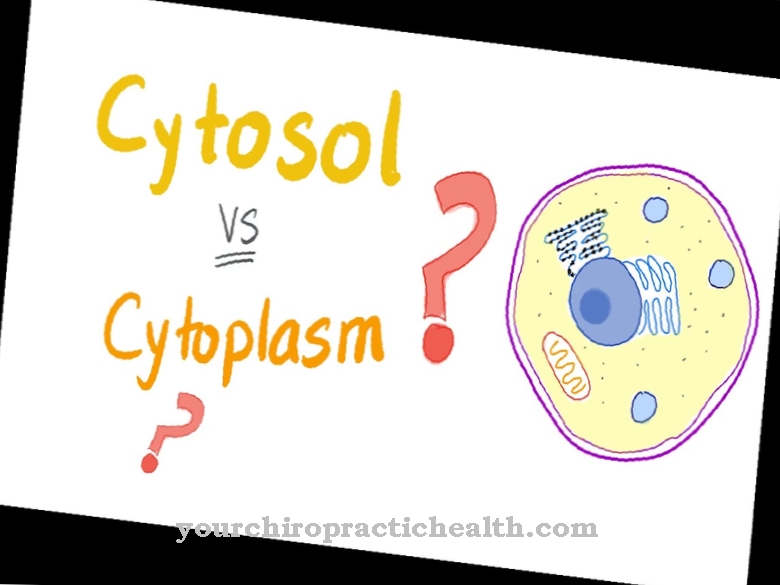Liver enzymes are enzymes that are typical of liver cells (hepatocytes). In clinical parlance, they are also often used Liver values called. An increase in certain enzymes is an indication of liver damage, while other enzymes occur in lower concentrations in diseases of the liver.
What are liver enzymes?
In liver disease, liver enzymes often provide important clues as to what type of disease it is. In general, the body needs enzymes to keep the metabolism going. If the liver cells are damaged, the liver enzymes in the blood serum are increased.
Depending on the increased enzyme, conclusions can then be drawn about the type of disease. The causes of the cell damage can be alcohol, viral infections, tumors or poisoning. Liver enzymes that are often measured include:
- Gamma Glutamyl Transferase (Gamma GT)
- Glutamate dehydrogenase (GLDH)
- Aspartate aminotransferase (AST, ASAT)
- Alanine aminotransferase (ALT, ALAT)
- alkaline phosphatase
Function, effect & tasks
The liver, which can be found in the upper right abdomen, is involved in many of the body's breakdown and build-up processes. Important proteins are produced here, and hormones and the red blood pigment are broken down in the liver.
The bile is then produced from the red blood pigment, which together with other substances form the bile. This is excreted in the small intestine and plays an important role in fat digestion. The liver also stores glycogen, copper and iron and breaks down food components that can then be used by the body. All of these processes require enzymes that mediate chemical reactions. But you are not used up yourself. For this reason they are also called catalysts.
Such enzymes include, for example, transaminases such as glutamate pyronate transaminase or glutamate oxalacetal transaminase. They occur in very large quantities in the liver and are released when liver cells are damaged. The aspartate aminotransferase is important for the respiratory chain or the malate-aspartate shuttle and ensures that the L-amino group is transferred to an α-keto acid. ALT plays an important role in the glucose-alanine cycle and catalyzes the reaction L-alanine + a-ketoglutarate = pyruvate + L-glutamate. Gamma-glutamyl transferase transfers the glutamyl residue of glutathione (GSH) to peptides or water, whereby glutathione is broken down.
Cysteine occurs in glutathione and is then transported into the cells. Here glutathione is then built up again. The role of alkaline phosphatases, which act as markers for various diseases of the skeleton and for liver diseases, has not yet been fully clarified. If there is liver disease, the enzymes are determined, which gives the doctor information on the extent or type of the disease. The level of increase in the respective enzyme indicates the extent of the damage.
Education, occurrence, properties & optimal values
The production of liver enzymes takes place in the liver cells. The various enzymes help accelerate the metabolic processes that take place in the liver cells. If the liver cells are damaged, the enzymes are released and enter the blood.
One of the most important liver enzymes is glutamate oxaloacetate transaminase, which is found in the liver, skeletal muscles and heart muscle and is now also known as aspartate aminotransferase (AST). The enzyme glutamate pyruvate transaminase or alanine aminotransferase (ALT) can be found in the cytoplasm of the liver cells. Pyruvate is formed from alanine aminotransferase, alanine from excess nitrogen.
A so-called membrane-bound enzyme is gamma-glutamyl transferase (y-GT), which occurs in the liver, but also in the kidneys, the small intestine, the spleen and the pancreas. Alkaline phosphatases are enzymes that can break down phosphoric acid monoesters and can be found in the liver, bones, kidneys or small intestine.
Diseases & Disorders
Liver enzymes are determined in diagnosing liver diseases. To do this, the doctor takes blood from the patient, which is then examined in the laboratory. Important syndromes that can lead to liver damage are autoimmune inflammatory diseases, hepatocellular insufficiency, cholestasis and cytolysis.
The cause can be neoplastic, autoimmune, traumatic, toxic or infectious. In cytolysis syndrome, liver cells are broken down and the cell contents enter the blood. The enzyme that predominates in cytolysis is the ALAT. In the case of a disease in the cirrhosis stage or alcohol-induced hepatitis, ASAT prevails. If the ASAT is moderately increased, this can indicate muscle cell damage, which can be confirmed by a subsequent determination of the so-called creatine kinase. The cholestasis syndrome indicates a disturbance in the excretion of bile or in the synthesis. A distinction can be made between obstructive and non-obstructive cholestasis.
In obstructive cholestasis, for example, the biliary tract is obstructed by gallstones, while in non-obstructive cholestasis the epithelial cells in the biliary tract are damaged, which means that bile acid is less excreted. In cholestasis there is an increase in the enzymes GT and ALP. If the ALP value is normal and only the GT enzyme is increased, then chronic alcoholism is usually present. If only the AlP value is increased, this indicates a bone disease.
In the case of hepatocellular insufficiency, the liver function is damaged, which reduces albumin synthesis and protein metabolism or the conversion of fats and sugar. In the autoimmune inflammatory syndrome, the immunoglobulins rise, and an increased IgA indicates alcohol-related cirrhosis.




.jpg)


















.jpg)



